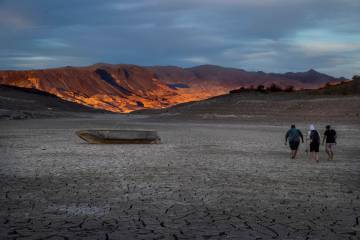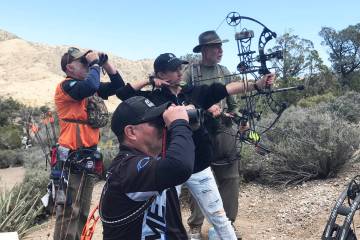Waterfowl season shaping up nicely
There is good news for hunters who have been waiting for opening day of Nevada’s waterfowl season. According to the 2013 Report on Trends in Duck Breeding Populations, hunters can expect to see bird numbers similar to those of last year. The overall duck population is about 45.6 million birds, according to the report published by the U.S. Fish and Wildlife Service.
Though that figure represents a 6 percent decrease from the 2012 population estimate of 48.6 million birds, it remains 33 percent higher than the long-term average. Exactly what that means when it comes to hunting opportunities in the Nevada remains to be seen, but it should be enough to get folks thinking about spending a few days afield.
Each spring, biologists from federal, state and provincial wildlife agencies gather the data for the population estimates by conducting aerial surveys in designated transects over principal breeding areas that cover more than 2 million square miles in the U.S. and Canada. The traditional survey area includes the north-central U.S., south-central Canada and Alaska. The eastern survey area includes parts of Ontario, Quebec, Newfoundland and Labrador, Nova Scotia, Prince Edward Island, New Brunswick, New York and Maine.
If you enjoy flying over beautiful country, and if you’re into ducks, that wouldn’t be a bad job to have. Imagine just how good you would become at identifying ducks and doing so on the fly, so to speak.
Hunters looking to bag a few mallards this year should have plenty of opportunity. Their numbers remain 36 percent higher than the long-term average at 10.4 million birds, not much different than the 2012 estimate. At 3.1 million birds, the estimate for green-winged teal remains well above (51 percent) the long-term average and similar to 2012, but blue-winged teal dropped by 16 percent compared to last year. Still, with an estimated population of nearly 8 million birds, blue-winged teal numbers are 60 percent higher than historical averages.
Gadwall numbers are similar to the 2012 estimate, as are those for the American widgeon, northern shoveler, redheads and canvasbacks. However, while most species are estimated to be significantly higher than long-term averages, population estimated for the Northern pintail are just the opposite. Their numbers are similar to those observed in 2012 but are 17 percent below that long-term average.
If you are new to waterfowl hunting in Southern Nevada, you have several options available when it comes to selecting a hunting destination. Those destinations include two federal refuges and three state wildlife management areas: Ash Meadows National Wildlife Refuge (Pahrump), Pahranagat National Wildlife Refuge, Overton Wildlife Management Area (Overton), Key Pittman Wildlife Management Area (Hiko) and Kirch Wildlife Management Area (about 70 miles north of Hiko).
Because of its proximity to Las Vegas and its popularity with local hunters, reservations to hunt on the Overton WMA are required throughout the season. For most of the season those reservations can be made at the Department of Wildlife offices in Las Vegas or Henderson, or at the management area. However, because demand is so high for the opening two days of the season, reservations for those days are made through a drawing process. At Key Pittman, reservations are required only for opening day. Reservation applications for both management areas can be downloaded at www.ndow.org but don’t wait to get them in. The deadline is 5 p.m. Wednesday.
Freelance writer Doug Nielsen is a conservation educator for the Nevada Department of Wildlife. His “In the Outdoors” column, published Thursday in the Las Vegas Review-Journal, is not affiliated with or endorsed by the NDOW. Any opinions he states in his column are his own. He can be reached at intheoutdoorslv@gmail.com.






















